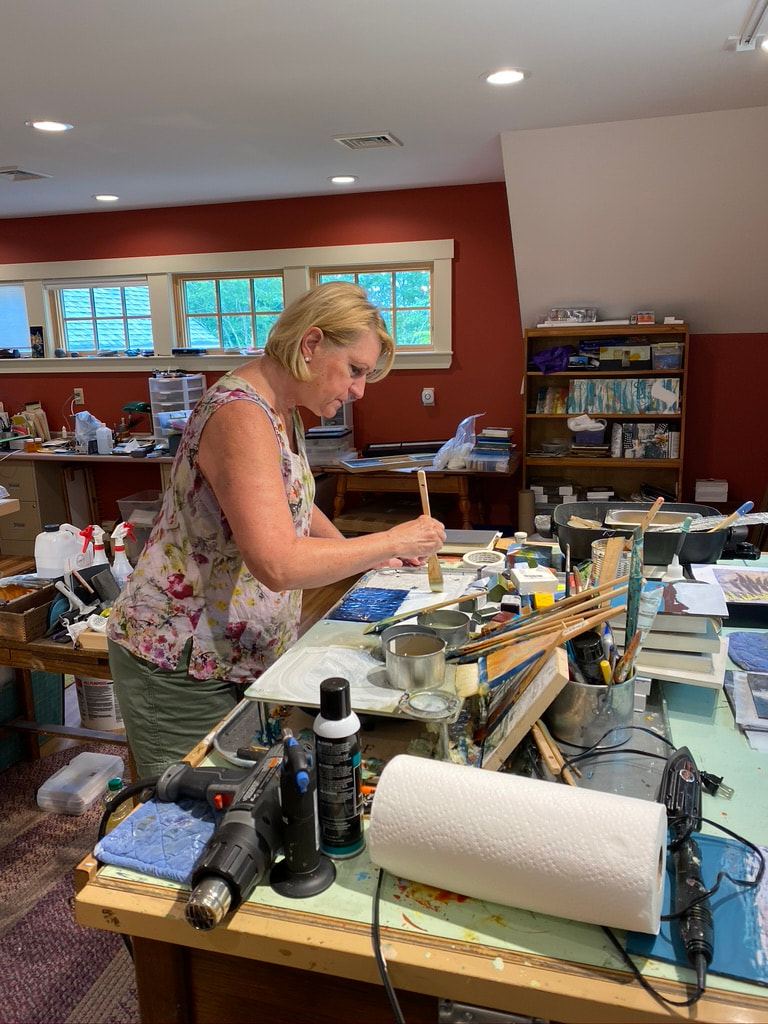Valerie LongI am an abstract artist using encaustic wax as my medium. In encaustic art, a variety of materials and methods are used, achieving an image with amazing movement and texture. One of its most alluring attributes is its exquisite surface quality. A major contributor to that quality is that beeswax, which is impervious to moisture, and therefore will not deteriorate, yellow or darken. Capturing the true depth and luminosity of encaustic takes experience, knowledge and skill. The outcome is a unique and original piece that stands the test of time. Inspiration for art - any art - can be derived from cultural tradition, an expression of the spiritual, a record of history, and the use of visual rather than verbal language.
|
|
|
THE INSPIRATION FOR ART
Interpreting the world through art is a fascinating process for me. As an abstract artist, I find that encaustic medium facilitates an other-worldly dimension in my paintings. The fluid nature of encaustic wax blended with vibrant colors, heat and other media allow for the quintessential creative process. Using a variety of tools, I fuse, move, blend and sculpt my pieces creating original work reflecting my experience with nature, other cultures, and architecture. While in college, I painted with oils and enjoyed painting the environment around me. Later I focused on and was juried in early American decorative techniques, which connected me to American history and early American decoration. Stunning art was produced in the 1700-1800’s using metallic powders, varnish, and oil paints. THE BEAUTY OF ENCAUSTIC WAX
Encaustic is derived from the Greek word enkaustikos, literally translated "to burn in.” This technique was notably used in the Fayum mummy portraits from the Roman occupation of Egypt (100–300 AD). Encaustic painting, also known as hot wax painting, uses a combination of heated beeswax and damar resin. The mixture can be used as a clear wax or colored with special pigments and is applied to a prepared surface. Since wax is used, encaustic art can be sculpted as well as painted with the possibility of encasing or collaging additional materials onto the surface. The process uses multiple translucent layers of molten bees wax, damar resin and pigment. The wax is painted onto a treated surface and fused to the underlying layer. The piece is then manipulated to create a surface that expresses movement, mystery, emotion and energy. Twenty to thirty layers of wax creates a sense of depth that is unique to this art. Encaustic encourages the artist to work in the most abstract manner, using the properties of encaustic wax to its fullest. When working with encaustic wax, the artist must understand how heat and other media merge and shape the piece. |


